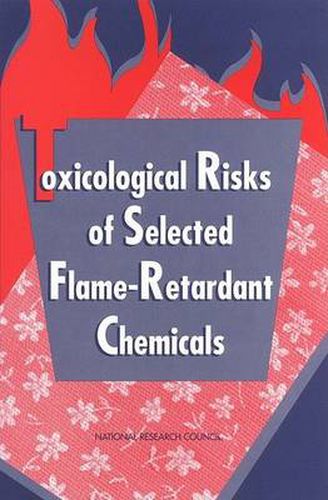Toxicological Risks of Selected Flame-Retardant Chemicals
Board on Environmental Studies and Toxicology, Committee on Toxicology, Subcommittee on Flame-Retardant Chemicals, National Research Council, Division on Earth and Life Studies, Commission on Life Sciences

Toxicological Risks of Selected Flame-Retardant Chemicals
Board on Environmental Studies and Toxicology, Committee on Toxicology, Subcommittee on Flame-Retardant Chemicals, National Research Council, Division on Earth and Life Studies, Commission on Life Sciences
Ignition of upholstered furniture by small open flames from matches, cigarette lighters, and candles is one of the leading causes of residential-fire deaths in the United States. These fires accounted for about 16% of civilian fire deaths in 1996. On average, each year since 1990, about 90 deaths (primarily of children), 440 injuries, and property losses amounting to 50 million dollars have resulted from fires caused by the ignition of upholstered furniture by small open flames. Certain commercial seating products (such as aircraft and bus seats) are subject to flammability standards and sometimes incorporate FR-treated upholstery cover materials, but there is no federal-government requirement for residential upholstered furniture, and it is generally not treated with FR chemicals. It is estimated that less than 0.2% of all U.S. residential upholstery fabric is treated with flame-retardant (FR) chemicals. The Consumer Product Safety Act of 1972 created the U.S. Consumer Product Safety Commission (CPSC) as an independent federal regulatory agency whose mission is to protect the public from unreasonable risks of injury and death associated with consumer products. CPSC also administers the Flammable Fabrics Act, under which it regulates flammability hazards and the Federal Hazardous Substances Act (FHSA), which regulates hazardous substances including chemicals. In 1993, the National Association of State Fire Marshals petitioned CPSC to issue a performance-based flammability standard for upholstered furniture to reduce the risk of residential fires. The Commission granted that portion of the petition relating to small open flame ignition risks. In response to concerns regarding the safety of FR chemicals, Congress, in the fiscal year 1999 appropriations report for CPSC, requested that the National Research Council conduct an independent study of the health risks to consumers posed by exposure to FR chemicals that are likely to be used in residential upholstered furniture to meet a CPSC standard. The National Research Council assigned the project to the Committee on Toxicology (COT) of the Commission on Life Sciences' Board on Environmental Studies and Toxicology. COT convened the Subcommittee on Flame-Retardant Chemicals, which prepared this report. Subcommittee members were chosen for their recognized expertise in toxicology, pharmacology, epidemiology, chemistry, exposure assessment, risk assessment, and biostatistics. Toxicological Risks of Selected Flame-Retardant Chemicals is organized into 18 chapters and two appendices. Chapter 2 describes the risk assessment process used by the subcommittee in determining the risk associated with potential exposure to the various FR chemicals. Chapter 3 describes the method the subcommittee used to measure and estimate the intensity, frequency, extent, and duration of human exposure to FR chemicals. Chapters 4-19 provide the subcommittee's review and assessment of health risks posed by exposure to each of the 16 FR chemicals. Data gaps and research needs are provided at the end of these chapters.
This item is not currently in-stock. It can be ordered online and is expected to ship in approx 4 weeks
Our stock data is updated periodically, and availability may change throughout the day for in-demand items. Please call the relevant shop for the most current stock information. Prices are subject to change without notice.
Sign in or become a Readings Member to add this title to a wishlist.


